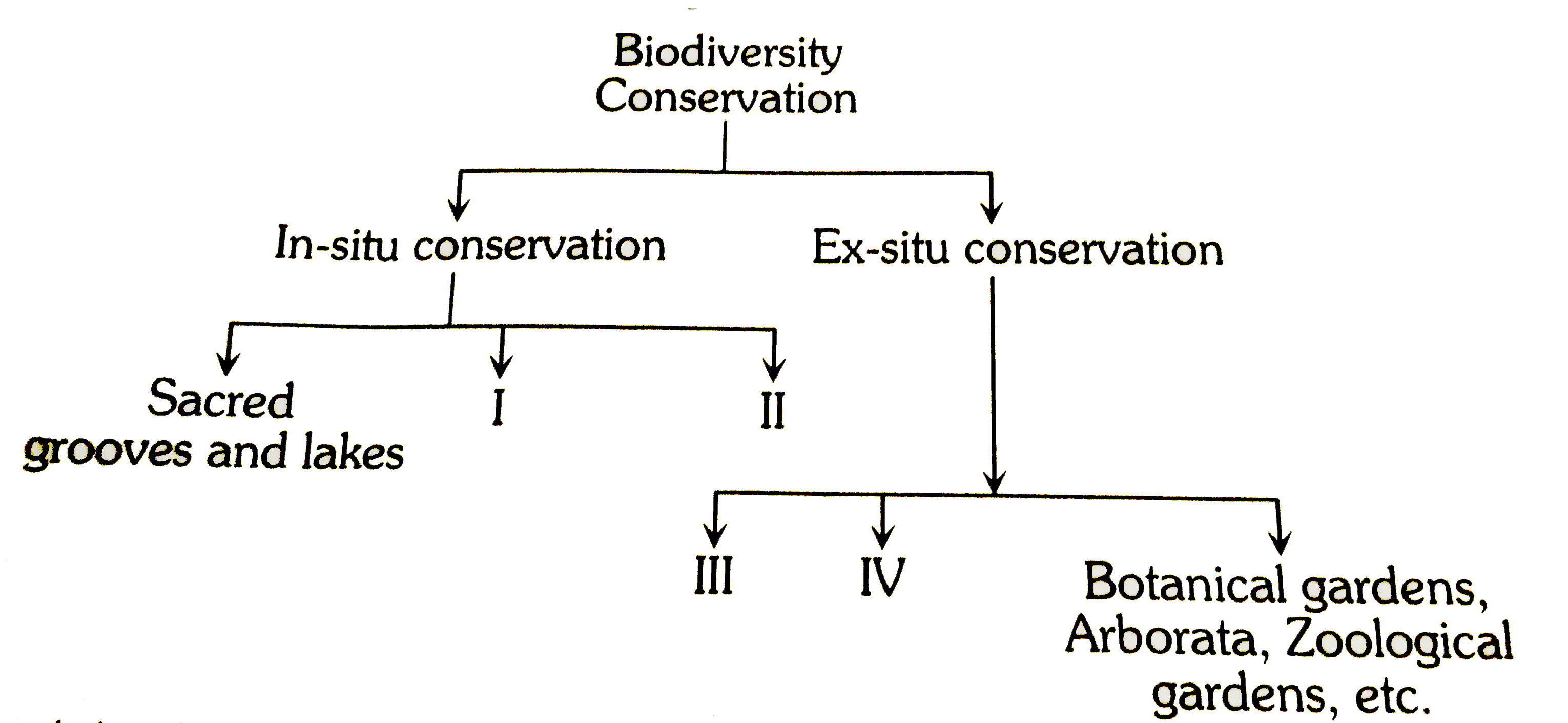List six advantages of "ex-situ" approach to conservation of biodiversity.
Video Solution
Text Solution
Ex-situ conservation - It is a conservation of selected threatened plant and animal species in places outside their natural habital. Population is conserved under simulated conditions that closelly resemble their natural habit. The gametes of endangered species can be preserved by methods such as cryo-preservation.
Whenever required, gametes can be fertilised invitro and transfer to the suruogate to produce endangered animals. Cryo-preserved plant material whenever required can be propagated through tissue culture methods. Seeds of rare varieties can be cryo-preserved. The commonly used ex-situ conservation methods are sperm bank/seed bank, cryo-preservation, invitro fertilization, tissue culture, botanical gardens, zoological parks, wild life safari.
|
Topper's Solved these Questions
- XII BOARDSBook:XII BOARDS PREVIOUS YEARChapter:XII BOARDSExercise:SECTION-D
Explore 50 Videos
- XII BOARDSBook:XII BOARDS PREVIOUS YEARChapter:XII BOARDSExercise:SECTION -A
Explore 12 Videos
- XII BOARDSBook:XII BOARDS PREVIOUS YEARChapter:XII BOARDSExercise:SECTION-B
Explore 85 Videos
- SAMPLE PAPER 2019Book:XII BOARDS PREVIOUS YEARChapter:SAMPLE PAPER 2019Exercise:Section E Part B
Explore 3 Videos
Similar Questions
Knowledge Check
The following is a incomplete flow chart depicting in - situ and ex-situ approaches of conserving biodiversity. Critically study and fill in the blanks I, II, III and IV
 AI - Biosphere reserves, II - Sacred plants, Home gardens, III - National parks and wildlife sanctuaries, IV - Seed banks, field gene banks, cryopreservation etcBI - Biosphere reserves, II - Seed banks, field gene banks, cryopreservation, III - Sacred plants, Home gardens, IV - National parks and wildlife sanctuaries etcCI - Sacred plants, Home gardens, II - National parks and wildlife sanctuaries, III - Biosphere reserves, IV - Seed banks, field gene banks, cryoreservation etcDI - Biosphere reserves, II - National parks and wildlife sanctuaries, III - Sacred plants, Home gardens, IV - Seed banks, field gene banks, cryopreservation etc
AI - Biosphere reserves, II - Sacred plants, Home gardens, III - National parks and wildlife sanctuaries, IV - Seed banks, field gene banks, cryopreservation etcBI - Biosphere reserves, II - Seed banks, field gene banks, cryopreservation, III - Sacred plants, Home gardens, IV - National parks and wildlife sanctuaries etcCI - Sacred plants, Home gardens, II - National parks and wildlife sanctuaries, III - Biosphere reserves, IV - Seed banks, field gene banks, cryoreservation etcDI - Biosphere reserves, II - National parks and wildlife sanctuaries, III - Sacred plants, Home gardens, IV - Seed banks, field gene banks, cryopreservation etcThe following is a incomplete flow chart depicting in - situ and ex-situ approaches of conserving biodiversity. Critically study and fill in the blanks I, II, III and IV
 AI - Biosphere reserves, II - National parks and wildlife sanctuaries, III - Sacred plants, Home gardens, IV - Seed banks, field gene banks, cryopreservation, etc.BI - Sacred plants, Home gardens, II - National parks and wildlife sanctuaries, III - Biosphere reserves, IV - Seed banks, field gene banks, cryopreservation, etC.CI - Biosphere reserves, II - Seed banks, field gene banks, cryopreservation, etc., III - Sacred plants, Home gardens, IV - National parks and wildlife sanctuaries.DI - Biosphere reserves, II - Sacred plants, Home gardens, III - National parks and wildlife sanctuaries, IV - Seed-banks, field gene banks, cryopreservation, etc.
AI - Biosphere reserves, II - National parks and wildlife sanctuaries, III - Sacred plants, Home gardens, IV - Seed banks, field gene banks, cryopreservation, etc.BI - Sacred plants, Home gardens, II - National parks and wildlife sanctuaries, III - Biosphere reserves, IV - Seed banks, field gene banks, cryopreservation, etC.CI - Biosphere reserves, II - Seed banks, field gene banks, cryopreservation, etc., III - Sacred plants, Home gardens, IV - National parks and wildlife sanctuaries.DI - Biosphere reserves, II - Sacred plants, Home gardens, III - National parks and wildlife sanctuaries, IV - Seed-banks, field gene banks, cryopreservation, etc.An in-situ method of conservation is
ABotanical gardenBCryopreservationCNational parkDTissue culture
Suggest the measures for conservation of biodiversity .
View SolutionDifferentiate between in-situ and ex-situ approaches for conserving biodiversity. Give an example for each.
View SolutionWhich is an advantage of ex-situ conservation?
View SolutionAssertion: Sacred groves are also one of the mean of ex-situ conservation of biodiversity.
Reason:- There is de-novo formation of forests, Hills or lakes for conservation of biodiversity in sacred grove category.
View SolutionExample of ex-situ biodiversity conservation is
View Solution